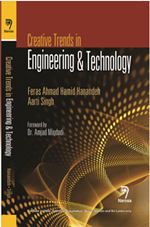AN APPROACH TO MAXIMIZE THE PERFORMANCE OF WIRELESS SENSOR NETWORK FOR SAMPLING TIME LESS THAN THE OPTIMUM VALUE
Conference: Creative Trends in Engineering and Technology
AbstractSampling time of the sensor node is defined as the time interval between successive sampling of the\nphysical phenomenon of interest. In high speed sensor applications like sensors used in oceanography, high speed robots\nfor obstacles detection, and gas detectors etc., the sampling times are usually low, lying in the range of 0.1 seconds to 0.2\nseconds. In such cases the battery is stressed more which result in its premature exhaustion. This is due to pronounced\nRecovery effect of the battery at lower sampling interval. It would result in increased investment in terms of battery. And\nif such sensors are used in impenetrable terrains where the chances of replacing the exhausted battery are very less, the\nsensor nodes have to be abandoned as their batteries get drained out sooner and hence lifetime extension of battery\nbecomes imperative. An innovative technique is presented in this paper with which the sensor node performance can\nreach to the levels nearer to optimum sampling time. Experimental results have shown lifetime improvement of the\nbattery by 17.42%. At the same time Quality of Service (QoS) has also improved by 34.84%. |
CTET - 2016
|
